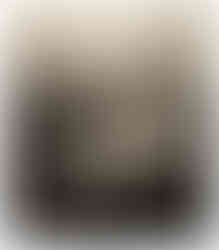Frederic Rodrigo Gruger - Gifted Gallery
- Lilium

- Mar 13, 2024
- 4 min read

Frederic Rodrigo Gruger, born 2 August 1871, was a Visual artist best known for his pen-and-ink drawings for major magazines like the Saturday Evening Post and Harper's Bazaar.
Gruger was born in Philadelphia. He attended the Pennsylvania Academy where he studied drawing with Thomas Anshutz and composition under Henry Thouron. Like many of his contemporaries, Gruger became enamoured with the pen-and-ink drawings of Edwin Austin Abbey, Charles Reinhart and Charles Keene, and it was with this medium that he began his career as a newspaper artist. During the 1890s, his on-the-spot sketches of fires, a presidential inaugural and the America’s Cup Race brought immediacy and excitement to the pages of the Philadelphia Public Ledger.
In 1898 Gruger was hired by George Horace Lorimer to illustrate for Saturday Evening Post. During the next forty-five years Gruger produced over 2,700 illustrations for the Post alone. Between 1914 and 1920 he created more than six hundred Post drawings, an average of two works per issue, per week over the entire six-year span. By the early 1920s, at the peak of his production, Gruger was simultaneously illustrating serialised stories for the Post, Cosmopolitan, Harper’s, Harper’s Bazaar, McCall’s, Hearst’s International and Redbook.
Gruger provided visual impact for the literary outpourings of more than four hundred authors including Theodore Dreiser, Booth Tarkington, Bret Hart, Edith Wharton, Agatha Christie, William Faulkner, Ring Lardner, Sinclair Lewis, Irvin S. Cobb, W. Somerset Maugham, Mary Roberts Rinehart, F. Scott Fitzgerald, Aldous Huxley and Irving Stone. He illustrated Edna Ferber’s Show Boat, Stephen Vincent Benet’s The Devil and Daniel Webster and the Mr. Moto series by J.P. Marquand. Perhaps his best-known drawings were those for Owen Johnson’s Stover at Yale, which appeared in McClure’s Magazine over an eight-month period during 1911 and ’12.

Gruger’s illustrations received a received positive reviews from the public, art editors and authors alike. F. Hurst wrote him, “You have said in your drawings what I tried to say in 100,000 words. I am your debtor!” and C.E. Scoggins acknowledged that Gruger’s illustrations for The House of Darkness “interpreted almost what I saw in my own mind.” But the ultimate compliment for any illustrator came to him from Walter D. Edmonds, who indicated that the persons in Gruger’s artwork “are all so exactly as I tried to describe them, even the house, that I now begin to find myself looking at the drawings and taking my own descriptions from them.”
Gruger’s methods were unique due to the fact that he never worked from the posed model or from photographs, but always creatively. He also took considerable pride in the fact that not once did he ever petition an art editor for work.
Although his earliest illustrations had been produced in pen-and-ink, the medium most closely associated with his name was the Wolff carbon pencil. Gruger would sketch a composition, then employ watercolor washes with lamp black in order to indicate the broad masses of grays and blacks. Finally he built up the forms and details with a Wolff pencil, rubbing a ruby eraser to blend the rich, velvety values.
The illustration board he employed was an inexpensive cardboard used by newspapers for mounting silverprints. Known originally as railroad blank, it soon was manufactured under his name, and Gruger Board became the mainstay of illustrators for several decades.
At the Art Students League, Thomas Fogarty would “hold Gruger up as one of the deans of beautiful illustration and storytelling,” while Harold Anderson’s teacher at Boston’s Fenway School of Illustration “frequently called Gruger to our attention, praising him as the finest of them all.” At the Art Institute of Chicago, Garrett Price’s instructor “got a whole carload of that [Gruger] board shipped into Chicago.” And John Falter, studying illustration at the Kansas City Art Institute, had a teacher who “held up F.R. Gruger along with Wyeth and Pyle as a giant to be aware of and study.”

But by the mid-1930s, Gruger’s influence was on the wane. He had never bothered to make the transition from black-and-white illustrations to color but, of even greater importance, his type of pictorial approach, with its attention to detail—to facial qualities, pose, appropriateness of architectural components, furnishings and dress—was no longer in vogue. Magazine art, in imitation of the movies’ favourite device, began emphasising the big close-up.
Nonetheless, when TIME magazine included an article entitled “U.S. Illustrators” in its May 1, 1939 issue, Gruger was not forgotten: “As worthy as Gibson to be called the dean of U.S. illustrators, in the opinion of many artists, is a stolid, 68-year-old Philadelphian…, Frederic Rodrigo Gruger.” And a dozen years later, when the Society of Illustrators celebrated its 50th Anniversary with an exhibition of the “Big Four,” Gruger was there along with Harvey Dunn, Wallace Morgan and Norman Price.
F.R. Gruger passed away just seventeen months after that show, on 21 March 1953. In the 1980s, exactly three decades following the Society exhibit, he joined the others of the “Big Four” by being inducted into the Hall of Fame.
Reading Recommendations & Content Considerations

F R Gruger and His Circle
by Bennard B Perlman



























































































































































Comments